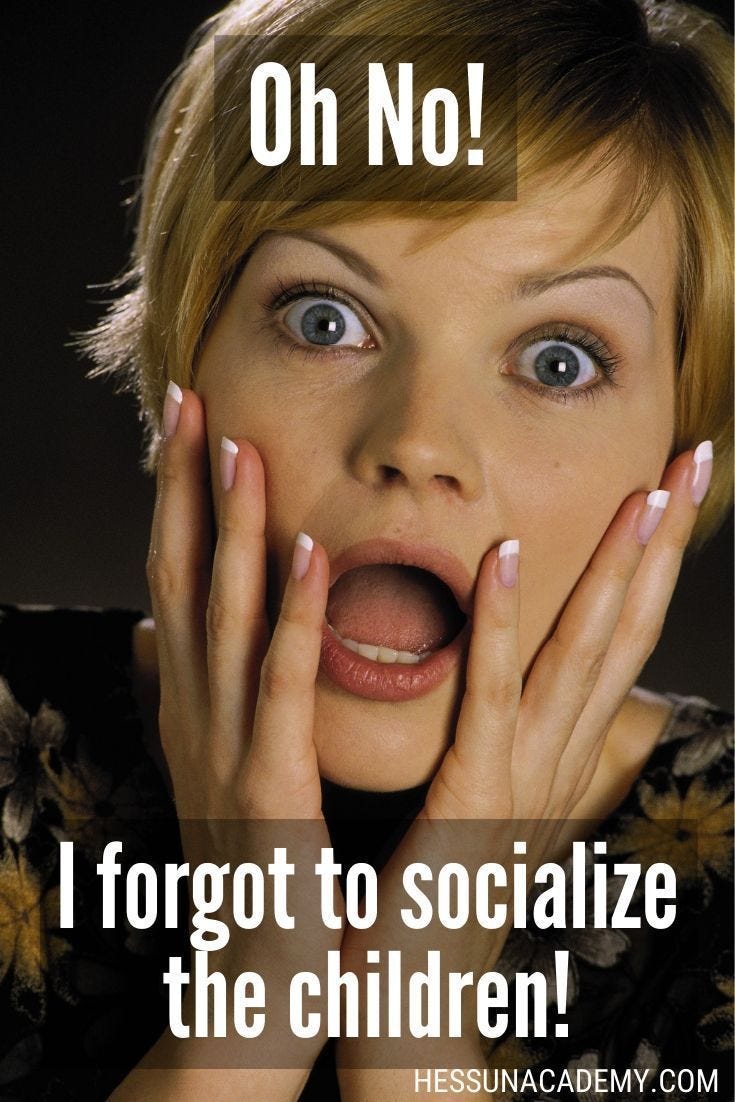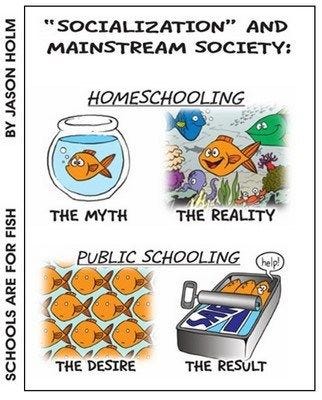The Encounter.
If you're homeschooled, you get it. The casual, "Where do you go to school?" The practiced, "Oh, I’m homeschooled!" The awkward silence... and then the FAQs begin. So, for the amusement of homeschoolers and the better information of other-schoolers, I, Liv Quicksilver, have collected and answered these burning inquiries: welcome to Homeschool FAQs!
First, let us tackle the concern that every homeschooler seems to run into, the national worry regarding home education, the Hydra-headed query that refuses to die:
Do you have social skills?
The Variants.
The homeschool sample I garnered for research purposes offered many, many variants of this question. From students: “How do you have any friends?” “Are you worried you aren’t socialized enough?” “How did you date?” “No but really, you can't actually have any friends, right?" “Are you socialized?” “You’re good at socializing for a homeschooler!” “Are you sure you have friends?”
From parents: “How can they learn socialization without being in school?" [Does that word mean what you think it means?] "How will they ever have friends?" “But how can they be normal if they don't go to prom?” “How will they know what to wear?"
The Logic.
People who ask this type of question are generally building on two faulty assumptions: 1) “homeschooling” means replicating a school classroom while sitting at home alone and 2) students at public school only ever make friends with the other students they share a classroom with. In fact, many traditional students do not find friends in their class, and are therefore extremely lonely for most of the school day, because they are stuck in the same place every day with people whose company they do not enjoy. Any student who has been bullied or isolated or ostracized at school might be forgiven for being skeptical of claims that school offers the ideal socialization experience.
The Statistics.
Richard Medlin, in his paper “Homeschooled Children’s Social Skills,” analyzes previous research on homeschooling and socialization and then describes the results of his own study, concluding from both sources that “homeschooled children’s social skills are exceptional.” (Reference.) According to Larry Shyers’ study “A Comparison of Social Adjustment Between Home and Traditionally Schooled Students,” homeschooled students showed significantly fewer “problem behaviors” (such as aggressiveness, competitiveness, etc.) in social situations than traditionally schooled students. (Reference.) These studies along with others show that on average, homeschooler students’ scores on measures of socialization are not only comparable to but actually surpass the socialization scores of traditionally schooled students. From the angle of public school teachers and students, articles like this one from Education Week describe the challenges that teachers in schools face related to cellphone and social media use: “Social media fuels fights and bullying among students that spill over into real-world conflicts on school grounds; viral dares and trends have led to students vandalizing school property; notification on students’ cellphones distract them during class time; and students’ inability to stop scrolling at night means they’re missing out on sleep crucial to their learning and mental health.” (Reference.) This does not sound like the ideal environment for cultivating excellent social skills. It sounds more like a social nightmare. So perhaps, for once, we should turn the tables — it’s high time someone started asking public school students (with the appropriate sympathy, of course) how their socialization is going!
The Sales Pitch.
First, smile! (As warmly as possibly, and not showing too many teeth.) Remember that you may be the only homeschooler your questioner has yet met, and that you are thus representing the entire homeschool community: it is your job to make the best impression you possibly can (hopefully rescuing future homeschoolers from answering this same question). Do not mention the obvious fact that you are, in fact, here, holding a conversation with an adult — and that of the two of you, you are the one not asking impertinent questions. “Oh, you’re a grown-up! Do you drink lots of wine and go to bed very late? Are you good at job interviews? Have you ever been divorced?” If applicable, you should also refrain from glancing with a smirk at any other young people in the room who are scrolling on their phones in a corner avoiding eye contact.
But seriously: these questions are probably the best opportunity we homeschoolers have to change people’s minds about homeschooling. The fact that you’re having a conversation that allows these questions in the first place already gives you a foot in the door. You could become the one person that turns a skeptic into an advocate. I have seen it happen! So when you hear the social skills question for the sixty-seventh time, conjure up your most gracious smile and your most charming attitude, and try an answer like one of these:
“Well, in my experience, homeschooling has actually allowed me to meet at least as many interesting people as I would in a school classroom. I have friends from [work/online classes/fencing/swim meet/trapeze practice/jiu-jitsu class/the event you’re currently at/etc.], and I’m always meeting new people to talk to. I’d say as social opportunities go, I’ve always had a wide range of places to meet people!”
“Oh, certainly I have friends! We don’t all go to the same classes together, and we’re not all exactly the same age, but I like having a pretty diverse friend group. I’ve always wondered, how does that work in school? Do you get to meet people that are not in your classroom? I don’t think homeschooling has given me any disadvantage in that respect.”
“Absolutely I can date as a homeschooler! I’ve never had an issue with finding friends and meeting people — at [volunteering/the library/charity galas/swing dancing/lion taming/choir/my newest business/etc.] — so I’m sure that when I want to start dating, I’ll find the right person.”
Finally, transition gracefully to the next subject — perhaps using an aforementioned activity to politely turn the topic back to your conversation partner’s interests — and let your outstanding social savoir faire speak for itself.






